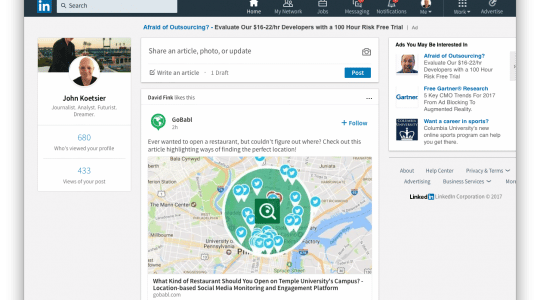
Mobile plays a key part in online sales. For example, on Thanksgiving and Black Friday 2015, 34% of U.S. online retail sales—$1.5 billion—came from purchases that consumers made using smartphones and other mobile devices. Sales went up nearly 21% over 2014 figures. What’s more, mobile device–made purchases accounted for 38% of U.S. online sales and 34% of Europe online sales in 2016.
However, mobile marketers need to pay attention to more than just the holiday season in the U.S. Emerging markets such as India, China, and Brazil (part of BRICS) all have their own holiday shopping seasons, each with their own unique shopping preferences.
An integral component of marketing is understanding analytics and how it can help inform effective campaigns. In this blog post, we’ll look at a few important aspects of mobile analytics, and share three strategies that will help marketers capitalize on any holiday season.
The key components of understanding analytics
The user experience is crucial
When it comes to improving the user experience, many mobile marketers overlook analytics. Instead, there’s a tendency to use analytics as a way to make a case for mobile’s usefulness. As a result, marketers use analytics to look back at a campaign once it’s finished, rather than examine real-time data to continuously optimize a campaign as it’s taking place.
Tracking KPIs keeps campaigns on target
Mobile marketers can sometimes neglect KPIs when making decisions, yet KPIs are necessary in measuring the success of a campaign. Decision-makers may not understand the methodology behind KPIs, and will make strategy decisions based on untested assumptions instead.
Customer needs should be top of mind
The decisions a potential customer makes on a mobile device—including holiday purchases—are almost always motivated by an immediate need. In the context of online shopping, customers may research products across a variety of sites before returning to a particular app or store to make a purchase. However, analytics now allows mobile marketers to anticipate and respond to customer needs in real time.
Mobile analytics: three layers
Mobile marketers who wish to truly outperform the competition during the holidays—and at any other time of the year—need to understand how to master all that’s possible with mobile analytics.
Earlier in 2016, we reported on the three layers of mobile analytics that marketers must know in order to develop and execute a successful strategy. These layers include the following:
1. Mobile data management
Mobile customer data must be collected, processed, and stored. This can be done through cross-device identity matching tools, location-based intelligence, and tag management software.
2. Mobile analytics
Customer data must also be understood in order to produce useful insights. For example, which touchpoints did this data come from—apps, emails, or web browsers? The tools for analyzing this data can include app store analytics, in-app engagement analytics, and mobile browser analytics.
3. Mobile engagement optimization
Data must be tested in order to learn how to achieve a desired outcome, according to specific audiences. How can the customer journey be improved? This information can be gained through mobile behavioral targeting tools and mobile experience testing.
Three analytics strategies for mobile marketers
As the next holiday season draws near, whichever one it is, it’s important for mobile marketers to quickly get up to speed and improve their analytics. Here are three effective strategies that they can use:
1. Audit existing analytics
This is the most important aspect of improving analytics, and it should be the first step of a marketer’s process in enhancing their analytics. Marketers should consider the following questions:
- What process do you currently have in place?
- What can you learn from it?
- Which actions are you tracking, and are your goals aligned with them?
- Which KPIs do you currently measure?
By understanding their existing analytics, marketers can effectively capitalize on mobile moments to capture their audience’s interest.
2. Monitor app monetization analytics
To optimize their target audience and campaign performance, marketers can fine-tune their in-app messaging, advertising efforts, and pricing models. By performing a series of A/B tests, you can examine which approach garners the most response from users.
For example, you might create two slightly different notifications about an upcoming holiday sale, using a simple, direct CTA for one and another that takes a personalized approach. You can send them to two audience segments, and compare each audience’s response.
KPIs to track: churn rate, referrals, CAC (customer acquisition cost).
3. Focus on in-app engagement
By paying attention to how users interact with their app, mobile marketers can identify opportunities to personalize and improve the app experience. If you notice that active users tend to drop off after three days, consider what may be causing this problem, such as a bug or excessive push notifications.
In fact, a Localytics survey found that 46% of users opt out of push notifications if they receive two to five in a week. If you see that many users tend to turn off their notifications, you can revise your messaging strategy and check your analytics to determine whether or not that’s made an improvement. The important thing to remember is that this is an ongoing process, and you may not see a clear difference immediately.
KPIs to track: retention rate, session length, ARPU (average revenue per user).
Mobile marketers who examine their analytics and track the right KPIs will be able to outpace their competition, and take full advantage of the holiday shopping season in any geographic market. We’ll celebrate that!
Author
Becky is the Senior Content Marketing Manager at TUNE. Before TUNE, she handled content strategy and marketing communications at several tech startups in the Bay Area. Becky received her bachelor's degree in English from Wake Forest University. After a decade in San Francisco and Seattle, she has returned home to Charleston, SC, where you can find her strolling through Hampton Park with her pup and enjoying the simple things in life.




Leave a Reply
You must be logged in to post a comment.